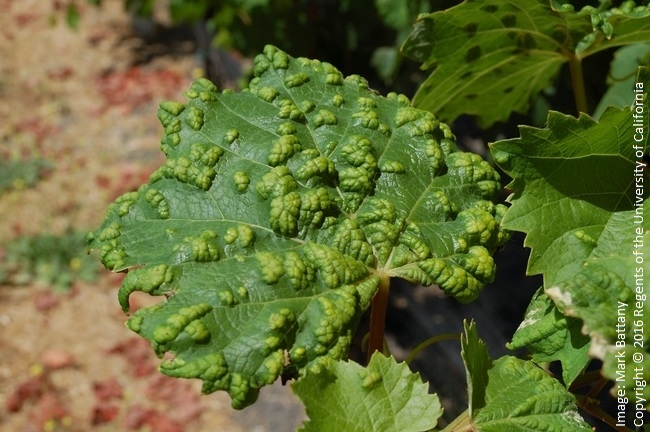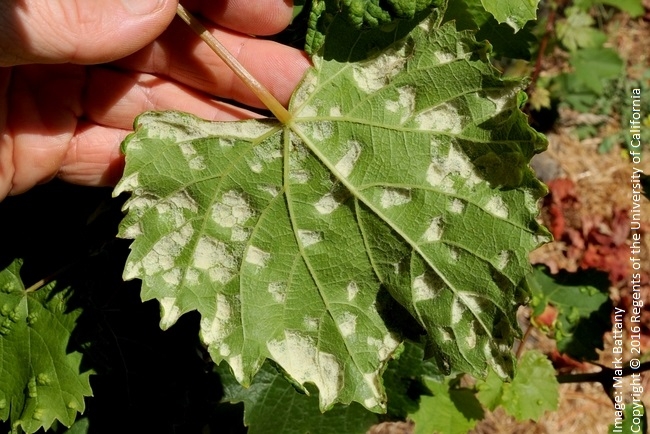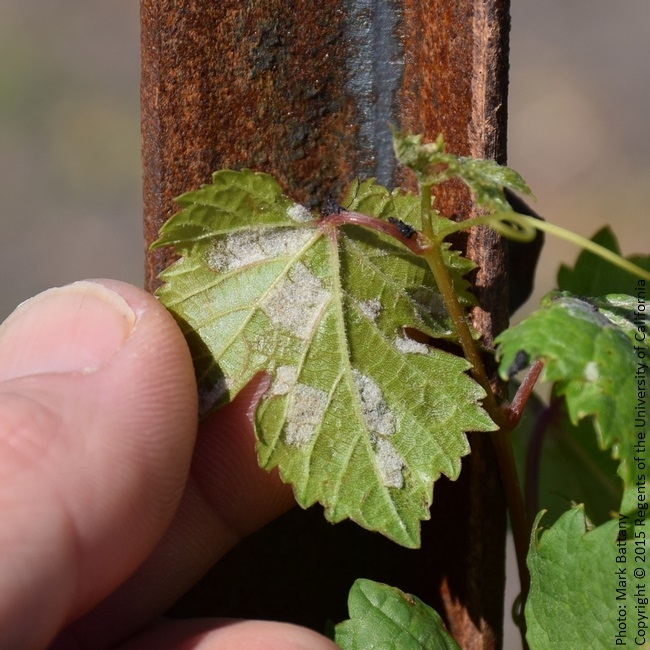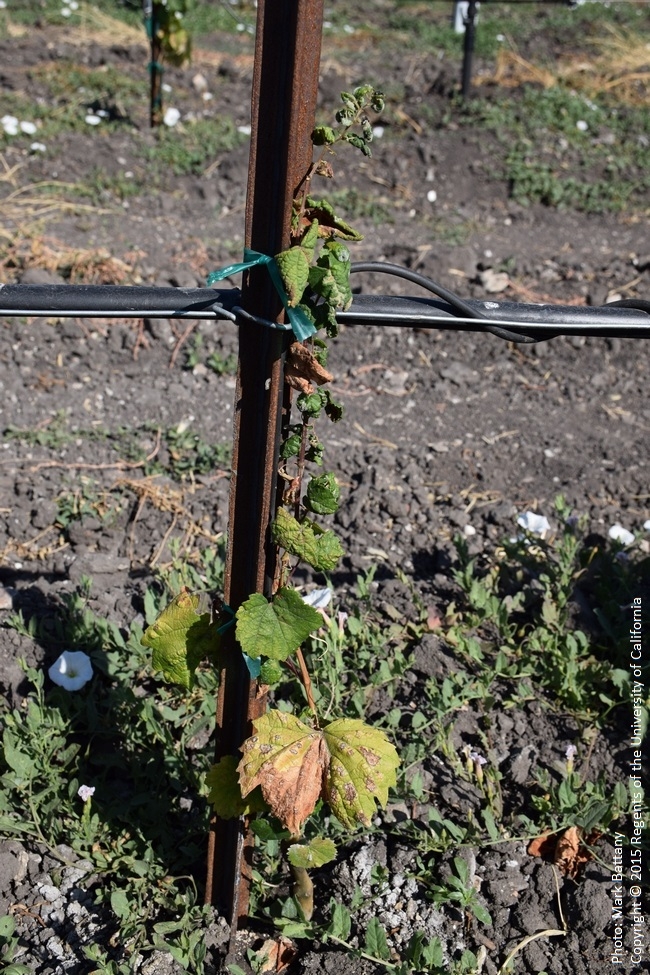The Grape Erineum Mite has become more common in this area judging by the number of inquiries about it over the past couple of seasons. This potential increase in activity of the mite is likely due to changes in the fungicides used for controlling powdery mildew, specifically due to the reduced use of sulfur in many vineyards.
In general for mature vines the presence of this mite is just a cosmetic issue which does not merit treatment. However for very young vines high mite pressure can lead to defoliation and thus treatment may be warranted.
These mites are extremely tiny worm-like creatures that feed on the underside of leaves in the spring and summer causing the leaf to produce very pronounced galls on its upper surface. The inside of these galls on the underside of the leaf are filled with patches of dense leaf hairs that shelter the mites. These patches are initially bright white in color; these may be confused with downy mildew (itself very uncommon on grapes in our region). In the later summer these white patches gradually turn brown.
The mites overwinter underneath the bud scales, and thus vines which have infestations in one season may be more likely to have infestations the following season as well.
The use of sulfur for powdery mildew control in the spring will help prevent populations of this mite from building up and subsequently lead to reduced populations in the summer. Treatments with sulfur after the mite infestations have already become heavy in the summer will have limited effect in that season.
Very young vines are at the greatest risk of suffering damaging defoliation due to the activity of the Erineum Mite. If mite activity is observed on newly planted vines then applications of sulfur will help prevent the infestations from reaching damaging levels.



